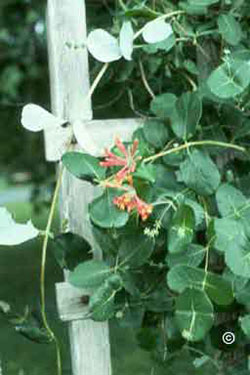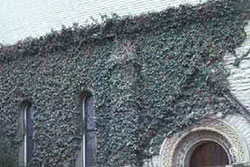
What are vines useful for?
Vines are a somewhat under used group of plants that can add interesting vertical and horizontal accents to any landscape. They’re also useful for covering large areas of fences, hiding unsightly areas from view, and providing quick cover for new landscapes. Several vine varieties have adapted well to Colorado’s temperamental climate.
What are different types of Colorado vines?
Trumpet honeysuckle, Lonicira sempervirems, is a rapid growing deciduous vine that displays very showy coral pink flowers all season, and their bluish-green leaves provide nice contrast.
Flowering clematis have large flowers, which come in many colors. They are deciduous and grow vigorously when provided with a bit of root protection.
Euonymus is one of the few evergreen vines that do well in Colorado. It’s a good grower, can trail or climb, and comes in several different varieties and leaf colors.
English ivy, Hedera helix, is a favorite of traditionalists. It’s evergreen, comes in many varieties, and does well in the shade. It needs no trellis support.

Silver lace vine, Polygonum aubertii, is a rapid-growing deciduous vine that displays masses of white flowers summer through fall.
Scarlet runner bean, Phaseolus coccineus, is an annual vine. It puts out bright scarlet flowers all summer and will rapidly cover a trellis. It’s available in pink and white varieties.
Hyacinth bean, Dolichos lablab, is also an annual vine. Its purplish leaves blend well with its spikes of showy purple or white flowers. It, too, is a rapid grower.
Where do vines grow?
Most vines need some kind of support, whether it is a trellis, fence, or wall. But many vines are equally appealing when allowed to cascade down a slope or trail over a retaining wall. Vines can lend a different look as a ground cover, and many do quite well in containers.
For more information, see the following Colorado State University Extension fact sheet(s).



